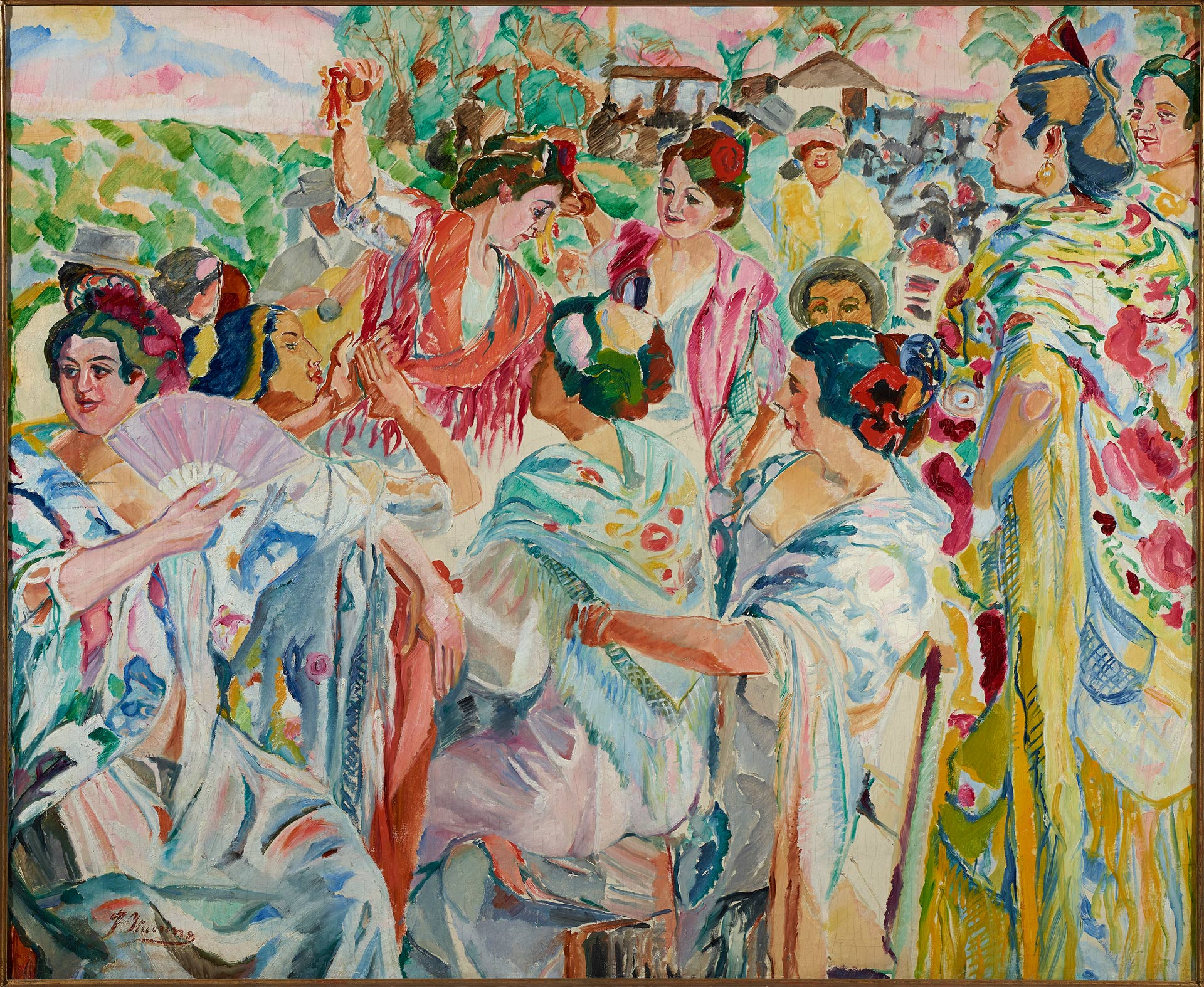
Francisco Iturrino (Santander, 1864 – Cagnes-sur-Mer, Francia, 1924)
Manolas
circa 1910
WORK INFORMATION
Oil on canvas, 114 x 141 cm
OTHER INFORMATION
Signed in the lower left-hand corner: "F. Iturrino"
Francisco Iturrino was the most original painter of his generation. Just one year younger than Sorolla, in 1901 he exhibited with Picasso at Ambroise Vollard's gallery and his painting later developed a style similar to that of Matisse, with whom he spent time in Andalusia and Morocco in the early 1910s. A few years earlier, his work revealed a fresh, vibrant palette in compositions filled with girls, sometimes nude and other times dressed, as in this case, wearing brightly-coloured shawls and wraps accented by flowers pinned in their hair. As in many of Iturrino's works, the scene gives an impression of tremendous vivacity. The figures take up most of the pictorial surface, with no particular compositional order, and some are cut off on the edges of the canvases, as was customary in the works of Degas, Matisse and others.
Manolas depicts a fair with a circle of women in the foreground, gathered around one woman who is dancing in the middle to the rhythm of her own castanets and the clapping hands of another with an oriental profile. Although we can make out a few men wearing hats, their faces are barely visible and the female element is therefore completely dominant, as in other compositions. Unamuno described his subjects as "women not nude but undressed, with flesh showing through the fabrics". Unlike many painters of his generation, Iturrino's frank, straightforward temperament allowed him to prioritise purely artistic values and preserved him from overindulging in picturesque anecdotal details when depicting these motifs, so often used as a pretext for emphasising ethnic or literary connotations. His painting captured the sensuality of the visible with immediate spontaneity, and the motif of young girls thus became the artist's favourite theme for its own merits, not as the pretext for an interpretation subsequent to the pure pictorial act.
The light tones of his work are the same ones praised by Guillaume Apollinaire in the canvases of bathers, cigar-makers, gypsies and dancers that he exhibited at the Paris Salon d'Automne in 1911, where they were hailed as "undeniably the most luminous thing that Spanish painting has ever produced". Iturrino's expansive, decorative use of colour made his work easily comprehensible in French circles, although there his choice of themes was identified as quintessentially Spanish.
Despite the large number of figures, this work gives the impression of fullness and vitality rather than overcrowding thanks to the diaphanous use of colour, with large patches of white that give the figures room to breathe, and the paint applied so lightly that in some places it almost resembles watercolour. This allowed the artist to effectively show off his skilfully light draughtsmanship on the fringes and delicate patterns of the shawls. The colour expands freely in the bright blotches on the shawl of the girl standing on the right. In contrast, the woman seated on the left with a fan and the raised arm of the dancer in the middle have a constructive quality that seems to be related to the works of Robert Delaunay. The treatment of the landscape in the background on the left reminds us of the passages of Cézanne, a painter who had a decisive influence on Iturrino. [Javier Barón Thaidigsmann]

